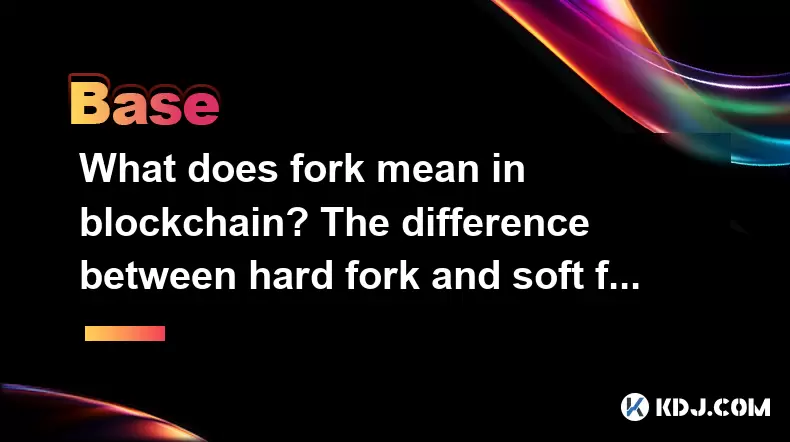-
 Bitcoin
Bitcoin $109,097.4805
1.18% -
 Ethereum
Ethereum $2,619.0872
3.68% -
 Tether USDt
Tether USDt $1.0001
0.00% -
 XRP
XRP $2.3167
0.83% -
 BNB
BNB $661.5548
0.34% -
 Solana
Solana $152.1243
1.68% -
 USDC
USDC $1.0000
0.00% -
 TRON
TRON $0.2868
0.22% -
 Dogecoin
Dogecoin $0.1713
2.65% -
 Cardano
Cardano $0.5904
2.01% -
 Hyperliquid
Hyperliquid $38.7227
-0.22% -
 Sui
Sui $2.9237
2.48% -
 Bitcoin Cash
Bitcoin Cash $502.2343
2.51% -
 Chainlink
Chainlink $13.8189
3.51% -
 UNUS SED LEO
UNUS SED LEO $9.0713
0.61% -
 Stellar
Stellar $0.2577
3.55% -
 Avalanche
Avalanche $18.3973
2.90% -
 Shiba Inu
Shiba Inu $0.0...01190
3.69% -
 Toncoin
Toncoin $2.7908
0.97% -
 Hedera
Hedera $0.1615
2.27% -
 Litecoin
Litecoin $87.4295
2.44% -
 Monero
Monero $310.3402
-2.08% -
 Polkadot
Polkadot $3.4598
2.90% -
 Dai
Dai $1.0001
0.01% -
 Ethena USDe
Ethena USDe $1.0003
0.04% -
 Bitget Token
Bitget Token $4.3123
0.75% -
 Uniswap
Uniswap $7.7548
6.56% -
 Aave
Aave $292.3175
4.12% -
 Pepe
Pepe $0.0...01023
2.94% -
 Pi
Pi $0.4613
1.06%
What does fork mean in blockchain? The difference between hard fork and soft fork
Jun 12, 2025 at 10:49 am

Understanding the Concept of Fork in Blockchain
In the world of blockchain and cryptocurrencies, a fork refers to a change or deviation in the protocol that governs a blockchain network. This change can result in either a split in the chain or a backward-compatible update, depending on the type of fork implemented. A fork essentially means that there is a divergence in the blockchain's path, leading to two potential versions of the ledger — one following the old rules and another adhering to the new ones.
Forks are not only crucial for the evolution of blockchain networks but also serve as tools for resolving disputes among developers, miners, and users regarding the future direction of a cryptocurrency project.
Hard Fork: Definition and Characteristics
A hard fork occurs when a blockchain undergoes a significant protocol change that makes previously invalid blocks and transactions valid (or vice versa), and this change is not backward compatible. As a result, nodes running the old version of the software will reject the new blocks created under the updated rules.
This leads to a permanent split in the blockchain, where the network effectively divides into two separate chains — one continuing with the old protocol and the other operating under the new rules. If both chains continue to be supported by miners and users, they may evolve into two distinct cryptocurrencies. For example, Bitcoin Cash emerged from a hard fork of the original Bitcoin blockchain.
Soft Fork: Definition and Characteristics
Unlike a hard fork, a soft fork introduces changes to the blockchain protocol that are backward compatible. In this case, the new rules are more restrictive than the previous ones, meaning that blocks and transactions validated under the new rules are still accepted by nodes using the older software version.
As long as a majority of miners adopt the new rules, the network remains unified. Users who do not upgrade their software can still interact with the network without issues. Segregated Witness (SegWit) was implemented as a soft fork on the Bitcoin network to increase block capacity without splitting the chain.
Key Differences Between Hard Fork and Soft Fork
The distinction between hard forks and soft forks lies primarily in their compatibility and impact on the network:
- Backward Compatibility: A soft fork maintains compatibility with older nodes, while a hard fork breaks compatibility.
- Chain Split: Only a hard fork can result in a permanent chain split, potentially creating two separate cryptocurrencies.
- Consensus Requirement: A soft fork requires only a majority of miners to enforce the new rules, whereas a hard fork needs nearly all participants to agree and upgrade their software.
- Use Cases: Soft forks are typically used for minor upgrades or optimizations, while hard forks are reserved for major changes or ideological splits within the community.
These differences highlight how each type of fork serves different purposes and carries varying levels of risk and impact on the ecosystem.
Examples of Hard Forks and Soft Forks in Practice
Several well-known cryptocurrencies have undergone both hard forks and soft forks, offering real-world examples of how these mechanisms function.
Bitcoin Cash (BCH): This is perhaps the most famous hard fork of Bitcoin. It occurred in August 2017 due to disagreements over block size limits. Supporters of larger blocks created a new chain that allowed for bigger blocks, aiming to improve transaction speed and reduce fees.
Ethereum Classic (ETC): After the infamous DAO hack in 2016, Ethereum decided to perform a hard fork to reverse the stolen funds. However, some members of the community opposed this decision, continuing to support the original Ethereum chain, which became Ethereum Classic.
SegWit (Bitcoin): Implemented in 2017, SegWit was a soft fork designed to optimize block space by separating signature data from transaction data. It did not cause a split in the chain and was adopted gradually by the network.
These examples illustrate how forks can shape the development and governance of blockchain projects.
How to Participate in a Fork
If you're holding cryptocurrency during a fork, you might receive tokens on the new chain if it results from a hard fork. Here’s how you can participate:
- Ensure your coins are stored in a wallet where you control the private keys. Exchanges often handle forks differently, and some may not support the new chain.
- Keep your wallet software up to date before the fork occurs to ensure compatibility.
- After the fork, check whether the new token has been distributed. You may need to use a specific tool or service to claim your coins on the new chain.
- Be cautious of scams or fake airdrops related to the fork. Always verify information through official channels.
Following these steps ensures that you can safely take advantage of any new assets issued during a fork.
Frequently Asked Questions
- Can a soft fork turn into a hard fork?
While a soft fork itself does not become a hard fork, the implementation of a soft fork may sometimes lead to a hard fork if a portion of the community disagrees with the changes and chooses to create a non-compatible alternative. - Do all forks result in new cryptocurrencies?
No, only hard forks have the potential to create new cryptocurrencies. Soft forks maintain consensus across the network and do not result in a split. - What happens to my coins during a fork?
If you hold coins in a personal wallet during a hard fork, you may receive an equivalent amount of the new token. During a soft fork, your coins remain unaffected as no split occurs. - Who decides when a fork happens?
Forks are typically proposed by developers and require consensus among miners, node operators, and sometimes users. In decentralized systems, no single entity has full control over implementing a fork.
Haftungsausschluss:info@kdj.com
Die bereitgestellten Informationen stellen keine Handelsberatung dar. kdj.com übernimmt keine Verantwortung für Investitionen, die auf der Grundlage der in diesem Artikel bereitgestellten Informationen getätigt werden. Kryptowährungen sind sehr volatil und es wird dringend empfohlen, nach gründlicher Recherche mit Vorsicht zu investieren!
Wenn Sie glauben, dass der auf dieser Website verwendete Inhalt Ihr Urheberrecht verletzt, kontaktieren Sie uns bitte umgehend (info@kdj.com) und wir werden ihn umgehend löschen.
-
 LAUNCHCOIN Jetzt handeln
LAUNCHCOIN Jetzt handeln$0.1353
24.98%
-
 BANANAS31 Jetzt handeln
BANANAS31 Jetzt handeln$0.0191
24.14%
-
 SHX Jetzt handeln
SHX Jetzt handeln$0.0121
20.43%
-
 CRO Jetzt handeln
CRO Jetzt handeln$0.0968
19.18%
-
 M Jetzt handeln
M Jetzt handeln$0.2058
18.89%
-
 VVS Jetzt handeln
VVS Jetzt handeln$0.0...02207
18.39%
- Kryptos werden im Jahr 2025 explodieren: Enthüllung der größten Rückkehrpotentiale
- 2025-07-09 05:30:12
- Unsichtbare Frau stiehlt die Show in Monopoly Go: Fordere Ihr Token!
- 2025-07-09 05:30:12
- Krypto -Preisschwankungen: Walkauf und Vorhersagen zu beobachten
- 2025-07-09 05:10:12
- Kettenlink -Preisimpreis: Die Walakkumulation signalisiert potenzielles Breakout
- 2025-07-09 05:10:12
- Iron Maiden, Eddie und The Royal Mint: Ein goldenes Jubiläum, das in Münze gefeiert wird
- 2025-07-09 05:15:12
- Entlassungen, KI und der News Explorer: Navigieren im Tech Tsunami
- 2025-07-09 05:15:12
Verwandtes Wissen

What is a user-generated content (UGC) NFT platform?
Jul 04,2025 at 01:49pm
<h3>Understanding the Concept of a UGC NFT Platform</h3><p>A user-generated content (UGC) NFT platform is a digital marketplace or e...

What is composability in DeFi?
Jul 06,2025 at 04:07pm
<h3>Understanding the Concept of Composability in DeFi</h3><p>Composability in DeFi refers to the ability of decentralized finance p...

What is a "crypto primitive"?
Jul 05,2025 at 10:14pm
<h3>Defining the Concept of a Crypto Primitive</h3><p>In the context of blockchain and cryptocurrency, a crypto primitive refers to ...

What is a crypto narrative?
Jul 07,2025 at 10:56pm
<h3>Defining the Concept of a Crypto Narrative</h3><p>A crypto narrative refers to the overarching story or theme that drives intere...

What is a stealth launch?
Jul 08,2025 at 06:42am
<h3>What Exactly Defines a Stealth Launch in Cryptocurrency?</h3><p>A stealth launch refers to the practice of launching a cryptocur...

What is a fair launch?
Jul 05,2025 at 07:31pm
<h3>Understanding the Concept of a Fair Launch</h3><p>A fair launch refers to the release of a cryptocurrency or blockchain project ...

What is a user-generated content (UGC) NFT platform?
Jul 04,2025 at 01:49pm
<h3>Understanding the Concept of a UGC NFT Platform</h3><p>A user-generated content (UGC) NFT platform is a digital marketplace or e...

What is composability in DeFi?
Jul 06,2025 at 04:07pm
<h3>Understanding the Concept of Composability in DeFi</h3><p>Composability in DeFi refers to the ability of decentralized finance p...

What is a "crypto primitive"?
Jul 05,2025 at 10:14pm
<h3>Defining the Concept of a Crypto Primitive</h3><p>In the context of blockchain and cryptocurrency, a crypto primitive refers to ...

What is a crypto narrative?
Jul 07,2025 at 10:56pm
<h3>Defining the Concept of a Crypto Narrative</h3><p>A crypto narrative refers to the overarching story or theme that drives intere...

What is a stealth launch?
Jul 08,2025 at 06:42am
<h3>What Exactly Defines a Stealth Launch in Cryptocurrency?</h3><p>A stealth launch refers to the practice of launching a cryptocur...

What is a fair launch?
Jul 05,2025 at 07:31pm
<h3>Understanding the Concept of a Fair Launch</h3><p>A fair launch refers to the release of a cryptocurrency or blockchain project ...
Alle Artikel ansehen




























































